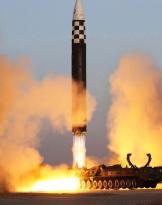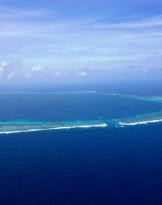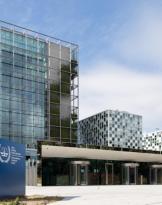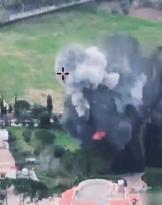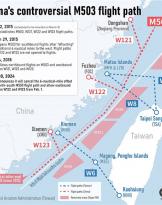The blanket of ash that covered Tonga and the surrounding islands after the third eruption between 21 December and 15 January of the Hunga-Tonga-Hunga-Ha'apai volcano (which for the sake of brevity we will call only Hunga) is nothing compared to the blanket of silence that has fallen on the question, as if it were a distant and unimportant problem. No sir, in the short span of twenty-five days a semi-submerged volcano in activity since 2009 and with a caldera, that is a magma deposit, of impressive size has provided enough information to alarm not only the media, but the policy maker around the world.
But let's go in order: let's understand what happened, what the risks are and why they are almost ignored.
Three apocalyptic events
The first eruption occurred on December 20, 2021: in itself, it was devastating, with noises audible up to 170 kilometers away and volcanic activity continued until January 5. Meanwhile, the Hunga has thrown ash and lapilli into the stratosphere.
On January 13, the monster woke up again, generating a column of ashes, steam and gas over 17 kilometers high. But this was still nothing compared to what happened a couple of days later, on January 15, when the explosion was at least seven times more powerful than the one in December and the ashes column soared over 20 kilometers. , producing detectable effects on a global scale. Noise was heard throughout Southeast Asia and the west coast of North America. The explosion, above all, was captured by satellites, showing what almost looks like a mushroom cloud the size of our North East.
We do not have much information on the conditions of the inhabitants of Tonga, but we do know that the subsequent tsunami reached the coasts of East Asia, Oceania and the Americas, from Alaska to Chile with waves at least one meter high. an area larger - but fortunately less populous - than that of the 2004 tsunami. The anti-tsunami warning system was activated and worked very well.
Risks in the short to medium term
 The eruption of the Hunga volcano released enormous quantities (perhaps in the order of half a megaton, i.e. 400-500.000 tons) of sulfur dioxide and nitrogen oxide, two gases that create acid rain when they interact with water and oxygen in the 'atmosphere. Depending on the duration of the eruption, the recurrence of such catastrophic events and the winds, acid rain could compromise coral reefs, agricultural production, tourism and fishing for decades.
The eruption of the Hunga volcano released enormous quantities (perhaps in the order of half a megaton, i.e. 400-500.000 tons) of sulfur dioxide and nitrogen oxide, two gases that create acid rain when they interact with water and oxygen in the 'atmosphere. Depending on the duration of the eruption, the recurrence of such catastrophic events and the winds, acid rain could compromise coral reefs, agricultural production, tourism and fishing for decades.
Above all, it is not yet known the amount of particulate matter, carbon dioxide and ash released by the volcano into the atmosphere, even if it is assumed to be comparable to that of the eruption of Pinatubo in the Philippines thirty-one years ago, that is to say to the approximately 10 cubic kilometers of volatile materials. Back then, the sunscreen caused the Earth's average temperature to drop by half a degree for the next two years. Recall that the eruption of Tambora, located in Indonesia, in 1815 released approximately one hundred cubic kilometers of ash into the atmosphere, enough to cause three consecutive years without the summer season in temperate and subtropical regions, as well as a drastic drop in production. agricultural and damage to populations still evident today.
We also consider that colder winters and cooler summers could also impact the current pandemic phase, extending the period in which COVID-19 is most virulent by a few weeks. The same benefit could be received by the other viral agents out there.
Why this eruption is not "politically correct"
Sorry to say, but the Hunga volcano has cracked once again, after the case of the 1991 eruption in the Philippines, the postulate, accepted by the media main stream and by leaders around the world, according to which human activities determine climate change. Therefore, it is not easy for politicians and reporters to do so storytelling on this self-evident manifestation of nature which alone determines the climate on our planet and leaves us powerless in the face of a devastating power.
Paraphrasing what was written by American and Asian experts following the eruption of Pinatubo, “The atmospheric impact of the eruption… was profound and sparked a keen interest in the role that volcanic aerosols play in climate change. This event demonstrated that a powerful eruption delivering a 15 to 20 megaton release of SO2 into the stratosphere can produce enough aerosols to offset current global warming trends and have a severe impact on the ozone balance. "1.
But do not be alarmed by us: only reassuring news around ...
1https://pubs.usgs.gov/pinatubo/self/
Images: Cooperative Institute for Meteorological Satellite Studies


